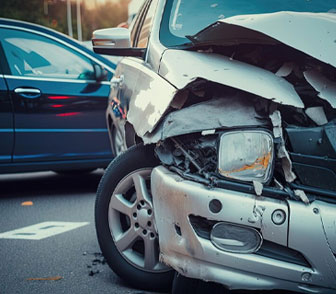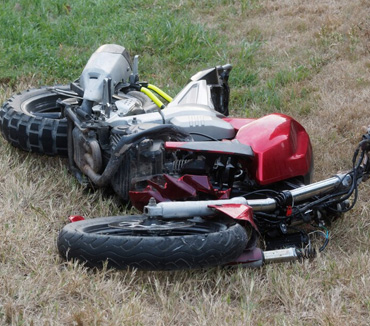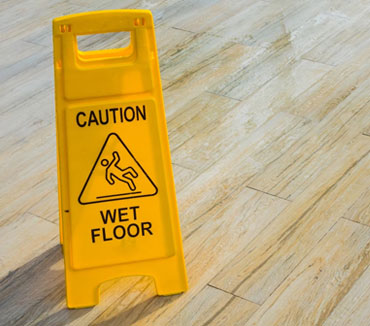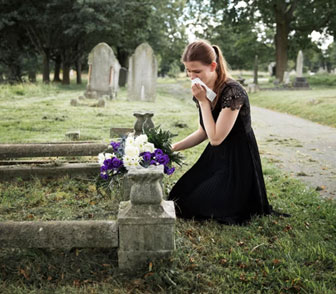10 Personal Injury Myths Debunked
Myth 1:The responsible party and his or her insurer will pay for a rental car for me for as long as I need it.
Fact: This can vary depending on the following: whether the defendant’s insurance company accepted liability (or if they have spoken with their insured about fault), based on if we have knowledge of the defendant’s insurance policy (we may have to wait for a police report), or if the defendant’s property damage policy limits can cover your vehicle, possible tow/storage, and a rental. California state requirements are a minimum of $5,000.00 per accident. This can seem very little, especially if there is more than one vehicle involved, your vehicle is worth more than $5,000.00 in a total loss situation, or the repairs to your vehicle exceed $5,000.00. A negligent party or his insurer is obligated to pay for the fair market value of your vehicle if it is totaled in an accident. They are not required to pay rental, sometimes called the “loss of use” of the vehicle. Some insurers will pay for your rental directly during the period between the car accident and the time they determine your car is totaled or repaired. Others will do a reimbursement only basis for the rental. You should consult with an attorney to find out what your options are during the property damage portion of your case.
Myth 2: I have to get my car repaired wherever it happens to be towed after the accident.
Fact: The law in the state of California is that you have the right to have your car repaired wherever you want to. Thus, you are not required to have the work performed at the place where your vehicle is towed after an accident, or where an insurance company tells you where to get your vehicle fixed.
Myth 3: I have to get 3 car estimates from body shops for the repair to my vehicle.
Fact: The at-fault party’s insurance company will send out an appraiser to inspect your vehicle at your home or work (if your vehicle is not drivable), or will direct you to one of their body shops for a “drive-thru” inspection (you do not have to get your vehicle repaired here). After approximately 24 hours, the vehicle repair estimate will be available for you, if not already provided to you at the “drive-thru” repair shop the insurance company directed you to, and you can then take your vehicle into the body shop of your choice and provide them with the insurance company’s INITIAL repair estimate. Thereafter the body shop will contact the at-fault party’s insurance company for supplemental estimates after they start working your vehicle. As a reminder, this only happens after the at-fault party’s insurance company has accepted liability. This is also the process should you choose to go through your own insurance company for the repairs, should their be a delay in obtaining the at-fault party’s insurance company information, the driver who caused the accident does not have insurance, the at-fault party is disputing liability, or you just prefer to go through your own insurance company.
Myth 4: I think I have full coverage on my auto policy.
Fact: A majority of the population may think they have full coverage, but may only liability coverage. What is considered full coverage is having Collision and Comprehensive coverage with your auto policy, along with uninsured/underinsured motorist (“UM”) coverage. Rental coverage, towing/roadside assistance, medical payment benefits are also additional optional coverages, but not considered in the full coverage arena.
Liability coverage only includes Bodily Injury coverage only to those you cause injury to (this does not cover you, if you were the driver of the vehicle that caused the accident) and Property Damage Liability coverage, which only covers you reliability if your vehicle damages someone else’s car or property. California Liability coverages are a minim of the following:
Bodily Injury coverage: 15/30 ($15,000.00 maximum per person for their injuries/$30,000.00 maximum per accident)
Property Damage Liability coverage: $5,000.00 maximum per accident.
It is a good idea to purchase enough of this insurance to cover the amount of damage your car might do to another vehicle, object or person(s).
Collision coverage helps pay for your repairs/total loss to your vehicle for damage caused by an accident. Therefore, you have the option to go through your own insurance company for the repairs, should their be a delay in obtaining the at-fault party’s insurance company information, the driver who caused the accident does not have insurance, the at-fault party is disputing liability, or you just prefer to go through your own insurance company. You are not at the mercy of the at-fault party’s insurance company.
Comprehensive coverage Helps pay for repairs or to replace your car if it is stolen, vandalized or damaged in some way other than in a collision. Includes loss or damage from fire, flood, falling objects, wind, hail and collision with an animal.
Uninsured and Underinsured Motorist coverage pays for damages you are legally entitled to recover from a driver without liability insurance or a hit-and-run driver or for an amount that exceeds an at-fault driver’s insurance limits. In other words, it covers you when the other guy doesn’t have enough or doesn’t have any insurance to pay you for damage repair or your medical bills. If it’s not required where you live, you can always choose to add it for your own protection.
Medical Payments (Med Pay) helps pay for hospital bills and medical care expenses for you and your passengers if you’re injured in an accident, no matter who was at fault. Some states require personal injury protection.
Myth 5: I have to provide a recorded statement to the other drivers insurance company after a car accident.
Fact: Definitely not, you should speak with a California attorney before giving a recorded statement to any insurance company, including your own insurance company. The recorded statement “lock you in” to what you state, and can be used against you later during your treatment, settlement, and/or during litigation. A majority of the time, the insurance companies do not need your recorded statement to accept liability and afford coverage, if their insured/at-fault party has provided them a statement and admitted to liability. Before doing this, it is crucial to consult with an attorney about your case.
Myth 6: The responsible party or his or her insurer has to pay for my car in full no matter how much I owe, even if I am “upside down” on my car and owe more than it is worth.
Fact: Unfortunately, many clients learn the truth about this the hard way. The law requires the responsible party to pay no more than the fair market retail value of the vehicle immediately before the accident. That means that a fair settlement of your property damage claim may not be enough to pay off your car note. An experienced lawyer has the knowledge and resources to help you get every penny of value for your car, but usually not more than the fair market value. To prevent having this problem, it is important that when you buy your car, you do everything possible to research the fair market value and also, to seek out the lowest possible finance rate available to you. That is not often the rate that the dealer quotes you. There are many different sources of auto financing available, including your bank, and online lenders. Do your homework before buying your car to avoid the difficult situation of being upside down, losing your car in an accident, and still owing thousands of dollars to a lender.
Myth 7: I shouldn’t go to the hospital if I am hurt in an accident because it is too expensive.
Fact: In reality, the opposite is true. It will cost you money in terms of the value of your settlement if you do not go to the hospital emergency room when it was necessary to do so. That is, if you are hurt in an accident, or even if you think you may be hurt, go in the ambulance to the hospital to be checked out. This is important for your health. Additionally, an insurance adjuster views the world only in this way: If a person is hurt in an accident, they go to the hospital. If they are not hurt, they do not go to the hospital. Since they did not go to the hospital, they must not have been hurt, and therefore, they are not entitled to be compensated by the insurance company. Unfair as it seems, that is the reality when dealing with insurance companies. If you are even just possibly hurt, go to the hospital and get checked out.
Myth 8: The at-fault party and their insurance company will settle because they will not want to pay what it would cost to take this case to litigation/trial.
Fact: Many defense lawyers/firms work on fixed or flat fees with insurance company they are contracted from, or are usually in-house counsel. That means the insurance company’s costs for hiring a lawyer to defend their insured are already known and will not increase no matter how long the case takes or how much legal work is involved. Because of this, it is very rare that the cost of litigating the case has much to do with the insurer’s decision to settle or not settle.
Myth 9: If I slip and fall at a store and/or private property and injure myself, my medical bills will automatically be paid for by the store and/or property owner.
Fact: The store and property owner are not automatically responsible to pay for your medical bills. There has to be proof that they were negligent.
In the state of California, in order to establish liability on a store and/or property owner they need to have actual or constructive knowledge of the dangerous condition AND they failed to remedy it timely, OR that the dangerous condition was present for a lengthy amount time and they failed to monitor, manage or maintain the property. As a Plaintiff, we have the burden of proof and are required to obtain evidence that the store and/or property owner had notice of the dangerous condition and failed to remedy the dangerous condition OR and the location of the where the accident occurred had not been maintained properly. That can be proven by an attorney obtaining video of the location and/or obtaining sweep sheets from the store and or private property.
What to do after a slip & fall at a store or private property and you have been injured:
- Make sure you file a written report with the store manager and/or property owner. Filing such as report not only documents the incident, but also helps confirm the date of loss, time and manner in which the injury occurred.
- Take photos of the scene where the incident occurred. For example, if you tripped on a unknown substance at a store make sure you take at least cell phone images with a date and time stamp. Such dangerous conditions may be cleaned up right away and you may lose a valuable piece of evidence.
- Obtain contact information for anyone who may have witnessed the incident. When another person can corroborate your account of the incident, it certainly helps Provide for your case.
- Do not accept a settlement or sign any documents before talking to an experienced California premises liability lawyer. Doing so may jeopardize your claim.
Myth 10: If my neighbor’s dog bites my child, I am stuck with paying the medical bills.
Fact: The medical bills related to the dog bite can be paid for/reimbursed through the homeowner’s/renters insurance policy of where the dog resides, or from the homeowner’/renters insurance policy who owns the dog. This is only if they have homeowners/renters insurance. Under some homeowner’s/renters insurance policy, medical payments benefits may apply.
Request A
Free Consultation
Fields Marked With An ” *” Are Required










